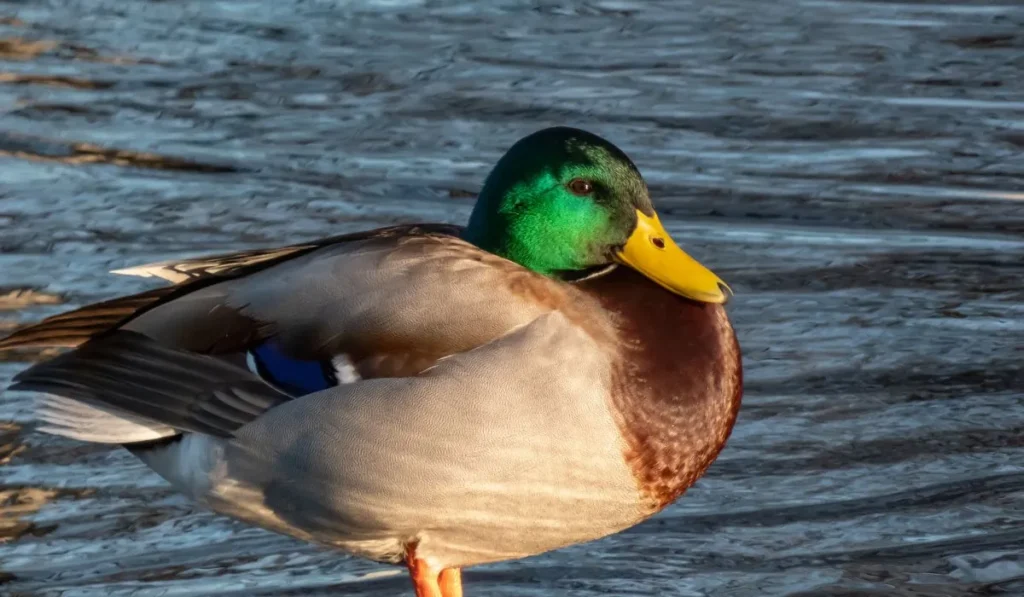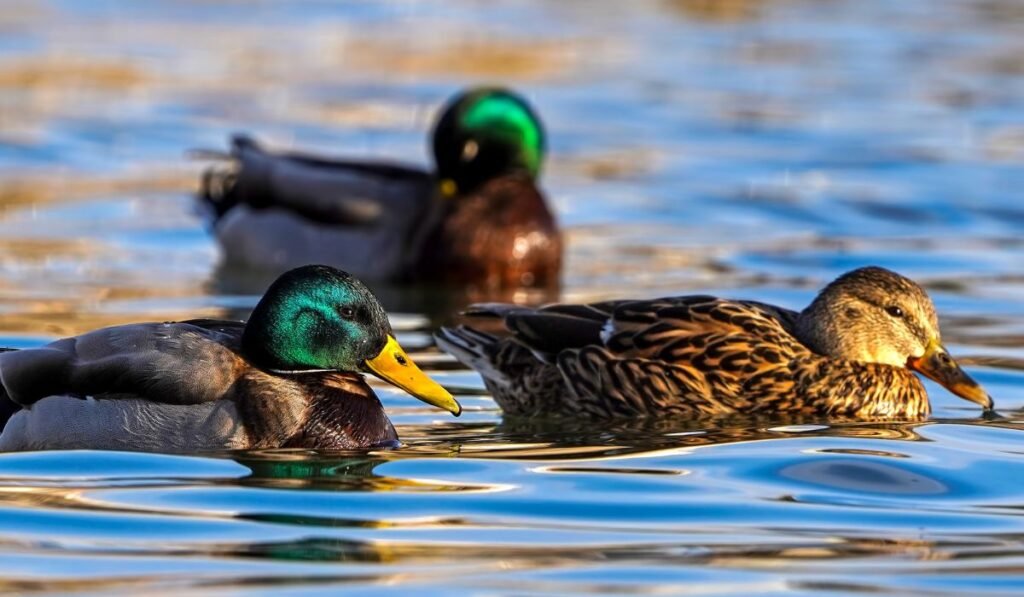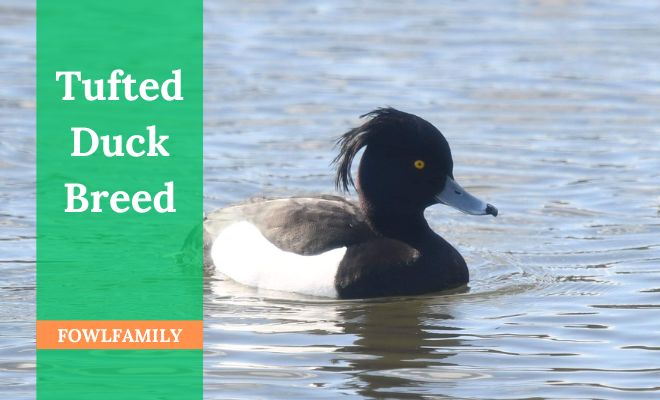Mallard Duck Breed: Are They Good Pets?

Have you ever seen a beautiful duck with a green head swimming in a pond? That’s the mallard duck breed! These ducks are common all over the world and are easy to recognize because of their special markings. However, they might not be good pets!
Mallard ducks, called drakes have bright green heads and yellow bills. It’s what they use to impress female ducks, known as hens. Hens, on the other hand, have brown feathers and orange beaks. Interestingly, they’re important too because of the classic “quack” sound we all know.
Mallard ducks are interesting because of their colorful looks and behaviors. To learn more about this popular duck breed, be sure you check further!
Table of Contents
Mallard Duck Breed – A Short Profile

Mallard ducks are quite interesting so poultry enthusiasts prefer to have them. So, here is a short table to introduce them!
| Feature | Description |
|---|---|
| Scientific Name | Anas platyrhynchos |
| Type | Dabbling Duck |
| Size | 20-26 inches long, 32-39 inch wingspan |
| Weight | 1.5-3.5 lbs |
| Habitat | Freshwater wetlands, ponds, lakes, rivers, parks |
| Diet | Aquatic plants, seeds, insects, small animals |
| Migration | Yes, highly migratory |
| Lifespan | Up to 10 years in the wild |
| Sound | Quack (females have a harsher quack) |
| Interesting Fact | Male mallards have a red patch on their bill called a “nail.” |
What Are the History and Location Of the Mallard Duck Breed?
Mallard ducks have been around for a long time. They’ve been here since the Late Pleistocene era.
From wild to tame
Around 4,000 years ago, people in Southeast Asia started keeping mallards as pets. They were prized for their tasty meat and eggs. Egyptians, Chinese, and Europeans. They also turned these wild birds into farmyard friends.
World travelers
Mallard ducks are real explorers. They naturally live in warm and cool areas across America, Europe, Asia, and Africa. On top of that, people have brought them to even more places like New Zealand, Australia, and South America!
Mallard ducks live in North America all year, but many of them move around. They breed in the northern United States and Canada. Then, they go south for the winter, often to the Southern United States and Mexico.
Most of them make nests in the Prairie Pothole Region in the north-central United States and central Canada.
Mallard Ducks Present Address
Today, Mallard ducks can be found in a wide range of habitats, including freshwater lakes, ponds, rivers, marshes, and even urban parks. They are highly adaptable birds, capable of thriving in diverse environments.
Due to their widespread distribution, Mallards are often considered one of the most recognizable ones!
What Are the Physical Appearance of the Mallard Duck Breed?

To learn about Mallards, you need to know their gender. So, here are the differences between Mallard duck males and females. Also, they have some similarities as well! Now, how to identify a male and female mallard duck?
Male (Drake)
- Coloration: The male, known as a “drake,” boasts a striking glossy green head
- Head: Males, known as “drakes,” sport a glossy green head that catches the eye.
- Beak: Their beaks are yellow.
- Body: Drakes have cream-colored bodies.
- Chest: Their chests are dark brown.
Female (Duck or Hen)
- Coloration: Females, simply known as “ducks” or “hens,” are more demure in appearance.
- Body: They are light brown across their entire bodies.
- Mottling: Dark brown mottling extends from their neck down.
Shared Traits
- Feathers: Both males (drakes) and females (ducks or hens) have feathers that provide insulation and buoyancy in water.
- Webbed Feet: Their webbed feet are perfectly adapted for swimming and navigating aquatic environments.
- Bill Shape: Mallards share a flat, broad bill that aids in foraging for food in water and mud.
- Social Behavior: Whether male or female, Mallards exhibit gregarious behavior, often forming flocks during migration.
- Distinctive Quacking: While the male’s quack is softer, both genders communicate with the classic “quack-quack” sound.
5 Personality Facts in Mallard Ducks!
The amazing personality is a trait that every duck owner will love in Mallards! So, here are the behavioral facts you must know –
Sociability and Adaptability
Mallards are social birds, often seen in pairs or small groups. They adapt well to various environments, from urban ponds to wild wetlands.
Seasonal Shifts
Mallard ducks aren’t the same all year round! During the breeding season, the male ducks become more protective of their territory and show off their colorful feathers to attract females.
Meanwhile, the females become more caring and protective of their nests and ducklings.
Vocal Communication
Their classic “quack-quack” sound is a common form of communication. Males have softer quacks, while females produce louder ones.
Feeding Behavior
Mallards are dabbling ducks. So, feed them mainly at the water’s surface rather than diving. They forage for aquatic plants, insects, and small creatures.
Plumage and Iridescence
The male (Drake) boasts a glossy green head, white collar, and purple-tinged brown breast. Both genders have distinct iridescent purple-blue speculum feathers edged with white.
Urban Residents
Mallards thrive in urban parks, lakes, and man-made water features. Their adaptability makes them a familiar sight in human-inhabited regions.
Reproduction and Breeding of Mallard Duck Breed

After all that hard work, tiny, fluffy ducklings hatch from the eggs. They pair when breeding comes. Here are some facts about their breeding!
When do the Mallard Ducks start their breeding season? Mallard ducks typically start their breeding season in the early spring. It’s usually between February and April in the Northern Hemisphere and August and October in the Southern Hemisphere.
However, the exact timing can vary depending on factors like –
- Temperature
- Daylight hours, and
- Local climate.
How long does it take for a Mallard Duck egg to hatch? It takes approximately 28 days for mallard duck eggs to hatch. During this time, the female duck sits on the nest and keeps the eggs warm.
How to breed Mallard Ducks? It is not recommended to try and breed mallard ducks. It’s unless you are a licensed breeder or wildlife professional.
Breeding wild animals requires specialized knowledge, permits, and facilities to ensure the welfare of the birds.
How many eggs does the Mallard Duck Breed lay? A female mallard duck can lay between 5 and 15 eggs in a single clutch.
Which color eggs do Mallard Duck lay? Mallard duck eggs are typically creamy white to greenish-buff in color with no spots. They are oval-shaped and slightly smaller than a chicken egg.
Migration Process: Are Mallards Migratory Birds?
Yes, mallard ducks are highly migratory birds.
Mallard ducks are really good at traveling long distances. They go on big trips twice a year, flying between where they have baby ducks and where they spend the winter.
Reasons to Travel
When it gets colder and there’s not much food where they live in the summer, they fly south where it’s warmer and there’s plenty to eat. This helps them stay healthy and have babies successfully.
They move around to find the right spots for having babies and getting food. In the summer, they need good places to make nests. Also, in the winter, they look for places with lots of food.
Migration Pattern
They typically begin their northward migration in late winter or early spring.
It’s February-April in the Northern Hemisphere to return to their breeding grounds. Their southward migration usually occurs in the fall. It’s in September-November in the Northern Hemisphere.
Some populations may only migrate short distances. But some of them travel hundreds or even thousands of kilometers.
They often fly in large flocks, called gaggles, forming V-shaped formations for efficient flight. These formations are thought to help conserve energy and improve communication.
People used to wonder, can Mallard duck fly? Yes, they are great fliers!
Surprise! Not all Mallard ducks Migrate!
Some mallard ducks stay in one place all year if it’s warm and there’s enough food. And some younger ducks or ones that aren’t feeling well might not go on the big trips either.
6 Amazing Purposes of Mallard Duck Breed!

The Mallard duck serves various purposes. So, I think they are one of the best wild duck breeds you’ll ever see! Let’s share the versatility of Mallards.
- Food: Mallards have been raised for their meat and eggs for thousands of years. They are great both commercially and by small-scale farmers.
- Pets: Their calm nature makes them popular backyard pets. Just you’ll need appropriate settings with sufficient space.
- Aesthetics: Domesticated mallards are kept for their ornamental value. So, beauty is another factor that makes them perfect ornamental ducks.
- Ecosystem: Mallards play a vital role in wetland ecosystems. So, they contribute to nutrient cycling and maintaining biodiversity.
- Seed dispersal: As they feed, they act like feathered gardeners. They spread seeds and promote plant growth in different areas.
- Food chain: They are part of the food chain, acting as both predators and prey. So, the breed can maintain a healthy balance within the ecosystem.
How to Raise the Mallard Duck Breed?
Raising Mallard ducks isn’t recommended for most people due to several reasons:
They’re wild birds
Mallard ducks have specific needs and instincts that can be hard to meet in captivity. Keeping them in a backyard setting can stress them out and be unhealthy.
Legal restrictions
Many places have laws against keeping wild animals like Mallards without proper permits or licenses. It could be illegal to own them without permission.
Expertise required
Mallard ducks need special care, including knowing what to feed them and how to create the right habitat. Without experience and knowledge, it’s hard to provide what they need.
Environmental impact
Introducing Mallard ducks to new places can cause problems. They might compete with native birds for food or spread diseases.
However, if you’re set on raising Mallard ducks, here are general steps:
- Keep them with other ducklings for company.
- Provide a big, warm coop with plenty of padding.
- Give them the right food and clean water.
- Make sure they have shelter from bad weather.
- While they don’t need a pool, offer water for them to dip in.
See the video to get some ideas for raising Mallards.
What Are the Pros and Cons of Mallard Duck Breed?
Mallard ducks are not suitable pets for most people. But they have some good facts as well. Let’s find it out!
Pros of Mallards
- Adaptability to various environments.
- Provision of meat and eggs.
- Ornamental appeal due to their attractive features and gentle disposition.
Cons of Mallards
- Struggle in captivity, leads to stress and health issues.
- Legal complexities regarding ownership.
- Demand for specialized care beyond typical pet owner expertise.
- Potential environmental disruptions when introduced to new ecosystems.
Related Articles:
FAQs
Check out the given questions in the following sections. I hope it’ll help you get more about Mallard.
Q. Is a Mallard a goose?
No, a Mallard is a duck, not a goose. While both are waterfowl, geese are generally larger than ducks and have different physical characteristics.
Q. Was the Mallard duck introduction intentional or accidental?
The introduction of Mallards to various regions outside their native range was intentional. Humans brought them to places like New Zealand and Australia for hunting and ornamental purposes.
Q. Can you eat Mallard ducks?
Yes, Mallard ducks are hunted in some areas for food. However, regulations and licenses are typically required.
Q. Do Mallard ducks sleep?
Yes, Mallard ducks sleep, just like other animals. They typically sleep at night, resting on land or water. They may also take short periods of rest throughout the day.
Summarization
Mallard ducks are feathered friends with different purposes. But they might not make good pets for most people. It’s due to their wild nature! Also, there are rules about owning them, and you need to know a lot to take care of them right.
Still, for those who really want to take care of Mallards, it’s important to give them the comfort they need. Remember, Mallard ducks help keep nature balanced by spreading seeds and keeping the world diverse. So, if you cannot raise them, at least help them to survive properly.






